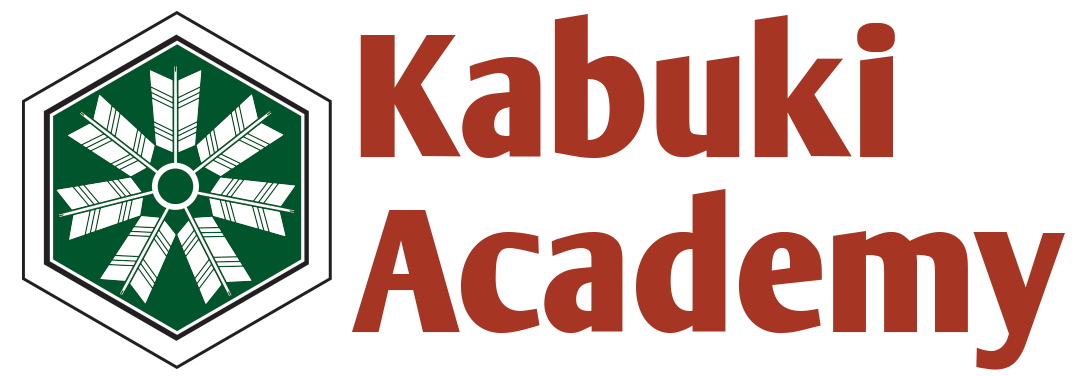The first character of the word Kabuki, “ka” means “song” and implies all music. Background music is known as “geza”, which is also the term for the small room seen through the grille on the left of the stage. Apart from the singers, the instrument central to geza is the three-stringed shamisen.
The geza musicians and singers actually play in a style known as nagauta, or “long song.” Alternately lively and virile and melodic and plaintive, nagauta was founded in Edo around 1740 and is the oldest form of what we may call pure Kabuki music, evolving together with the theater. As its name implies, nagauta was designed as an extended style of melodic music, suitable for the accompaniment of lengthy dances.
-The above text is reprinted from Kabuki: A Pocket Guide by Ronald Cavaye Copyright(c)1993 Charles E. Tuttle Company, Inc. By permission of Tuttle Publishing, www.tuttlepublishing.com-

Mary Ohno has studied Naga-uta style shamisen for 35 years and earned the professional license from Kine-ie shamisen Institute located in Tokyo, Japan, and its title of “Kine-ie Yanacho” in March 1974. She has been performing at shamisen concerts periodically at several theaters including National Theatre in Tokyo, Japan, with Kine-ie Troupe.
Shamisen was originally introduced from China. There are, however, several stories as to how it was brought over from China. The style of shamisen has been improved from time to time since the 16th century and its popularity grew together with the development of Kabuki. In the beginning, snake skin was used for the drum instead of cat or dog skin as you find on the present-day shamisen. In terms of shamisen tuning, there is no fixed pitch, but the intervals remain the same, such as C F C or B E B.
Please visit the Kabuki Academy Myspace Music page where you may enjoy shamisen music performed by Mary Ohno.
Shamisen Music (Group Lesson/Class Schedule) Seattle Central Community College, Broadway Edison Bldg. Room 2122, Sat.1:00-2:00pm. In addition, private shamisen lesson is available at Mary Ohno’s studio in Tacoma.
You can also take shamisen lesson on SKYPE. If you need any further question about the SKYPE lesson, please contact to Mary Ohno.
For the beginner shamisen students, shamisen instruments are available for a nominal rental fee, together with other parts such as bachi (plectrum), koma (bridge), hiza-gomu (rubber pad), etc. Shamisen text and CD are not included. As for purchasing new or used shamisen, reparing old shamisen or fixing drum skin (hari-kae)
send e-mail to Kabuki Academy.

